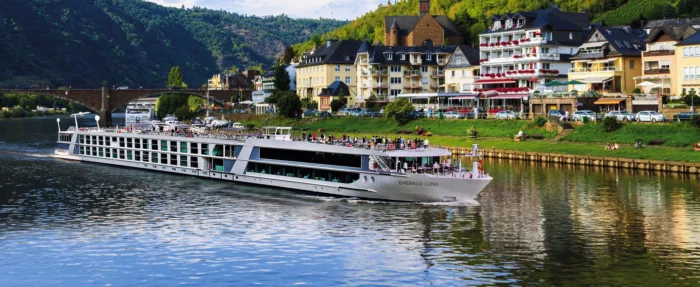
Emerald Cruises
Emerald Cruises offers a modern, relaxed, super-premium all-inclusive cruising experience, with contemporary and elegant ships and bucket-list destinations.
Onboard, guests are able to dine at four all-inclusive and unique outlets, enjoying free-flowing alcoholic beverages at mealtimes. Flexibility is key, with its range of shore excursion packages, and every aspect of the trip is taken care of – including flights and transfers.
180
Passengers
47
Crew
2021
Launched
3544t
Tonnage
135m
Length
11m
Width
13kts
Speed
4
Decks
EUR
Currency
Cruise Itinerary
Days 1 - 2
Regensburg, Germany
Day 3
Passau, Germany
Day 4
Dürnstein, Austria
Day 5
Vienna, Austria
Day 6
Bratislava, Slovakia
Days 7 - 8
Budapest, Hungary

Days 1 - 2
Regensburg, Germany

Day 3
Passau, Germany

Day 4
Dürnstein, Austria

Day 5
Vienna, Austria

Day 6
Bratislava, Slovakia

Days 7 - 8
Budapest, Hungary
Ship Details


Emerald Cruises
Emerald Luna
Transporting you on the Rhine, Main, Danube and Moselle rivers, this elegant river ship lets you see the highlights of the continent in complete style and comfort.
Cabins
All Prices


